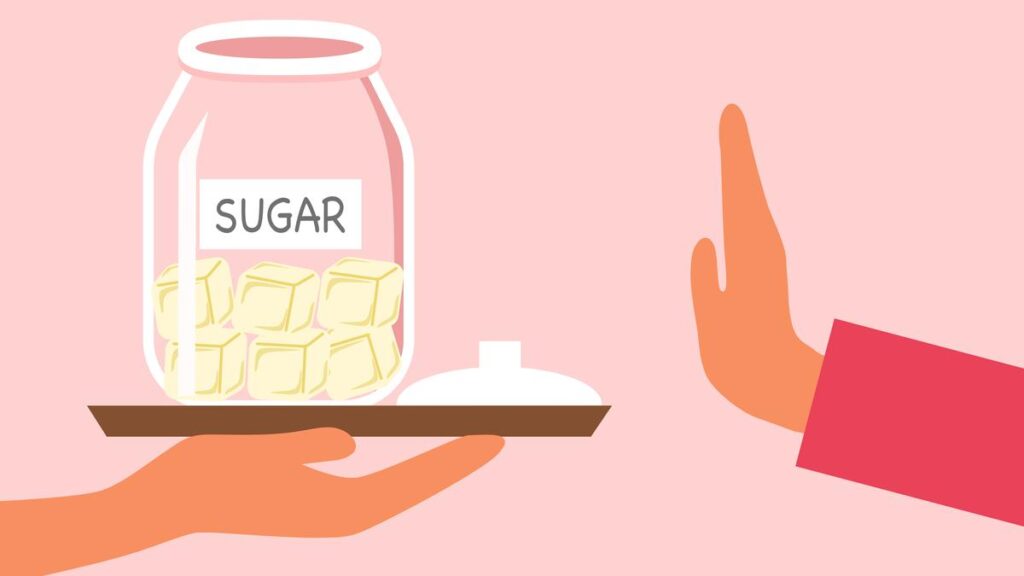
For representative purposes.
| Photo Credit: Getty Images
The story so far: In order to check the sugar intake of school-going children, the Central Board of Secondary Education (CBSE) has instructed over 24,000 affiliated schools across India to establish ‘sugar boards’, where information is displayed for educating students about the risks of excessive sugar intake.
What are ‘sugar boards’?
Two years ago, food influencer Revant Himatsingka appealed to schools through a video to start a ‘sugar board’ campaign, which involves a visual representation of the quantity of sugar contained in a bottle of aerated drink or packaged fruit juice. “Children need to learn in fun and interesting ways the perils of consuming excess sugar. So, in Do It Yourself (DIY) workshops with school children, we ask the students to stick, say for instance bottles of aerated drinks, or packaged juices, [on a paper/white board] and adjacent to that stick the quantity of sugar in a packet and number of teaspoons of sugar that go into the product,” Mr. Himatsingka told The Hindu. For example, a 300 ml bottle of a popular aerated drink contains eight teaspoons of sugar, with one teaspoon of sugar being nearly four grams. Similarly, a popular brand of a 125 ml packaged mango drink contains five teaspoons of sugar.
‘Sugar boards’ provide essential information, including recommended sugar intake, the sugar content in commonly consumed foods (such as junk food and cold drinks), health risks associated with high sugar consumption and healthier dietary alternatives.
The CBSE has stated that schools may submit a brief report and photos of the activity on ‘sugar boards’ till July 15. Mr. Himatsingka said that while many schools have already included ‘sugar boards’ in their activities, CBSE’s directive will create awareness in nearly two crore students and their families.
Why are ‘sugar boards’ necessary?
The National Commission for Protection of Child Rights (NCPCR) has pushed for the introduction of a ‘sugar board’ in all schools, not only in those which are CBSE affiliated, but also in schools which are affiliated to various State boards. In a letter written to CBSE by NCPCR in March earlier this year, the child rights body emphasised, “Over the past decade, there has been a significant increase in Type 2 Diabetes among children, a condition primarily seen in adults. This alarming trend is attributable to high sugar intake… easy availability of sugary snacks, beverages and processed foods within school environments,” the letter states.
While population-based data on Type-2 diabetes among children and adolescents are unavailable from India, it is estimated that the incidence of Type 2 Diabetes in the group is 397 per lakh population, next only to China which has 734 estimated cases per lakh. Speaking with The Hindu, Dr. Divya Gupta, gynaecologist and a member of NCPCR, said, “Studies indicate that sugar constitutes 13% of daily calorie intake for children aged 4 to 10 years and 15% of those aged 11 to 18 years —substantially exceeding the recommended limit of 5%.”
What is India’s regulatory stand?
Official sources said that the Food Standards and Safety Authority of India (FSSAI) had convened a scientific panel of experts in April and May earlier this year, to decide on a High Fat, Salt and Sugar (HFSS) definition pertaining only to school meals. However, the FSSAI has still not set HFSS standards or finalised the ‘health-star rating system’, for front-of-pack labelling regulations. “In the meeting, we could not arrive at definition for HFSS for what comprises a school meal. Discussions are underway and it was decided that the HFSS definition for what comprises school meals cannot be different from that of packaged food. So a holistic HFSS definition should be formulated,” an official said.
Currently, FSSAI has regulation for brands making food claims. For instance, a low sugar claim can only be made if a product contains not more than five gm sugar per 100 gm. “While there are regulations in place for making claims on packaged food, FSSAI has not fixed cut-offs for High Fat, Salt, Sugar consumption for the Indian population,” the official said. India currently relies on World Health Organization (WHO) cut-offs for ideal HFSS intake. For instance, WHO guidelines restrict daily sugar intake in adults and children to 25 grams (six teaspoons). However, experts argue that the Indian cut-off should be lower, and should be derived from indigenous data, as the genetic make-up of Indians make them more prone to heart attacks. “We need epidemiological data, through a country wide study which monitors dietary intake, along with variables like data on Body Mass Index, insulin resistance, lipid profile, biochemical parameters and so on,” said an expert closely working with FSSAI on the issue.
What next?
Dr. Gupta said that the child rights body is working on gradually introducing directives for foods high in salt and trans-fats as well.
“NCPCR is also gathering data on children suffering from diabetes from government hospitals. We will be talking to parents during parent teacher meetings about the importance of healthy eating. We have had stakeholder meetings with paediatric doctors who will be roped in to go to schools for workshops and so on. Introducing ‘sugar boards’ is just the beginning,” Dr. Gupta said.
Published – May 27, 2025 08:30 am IST

